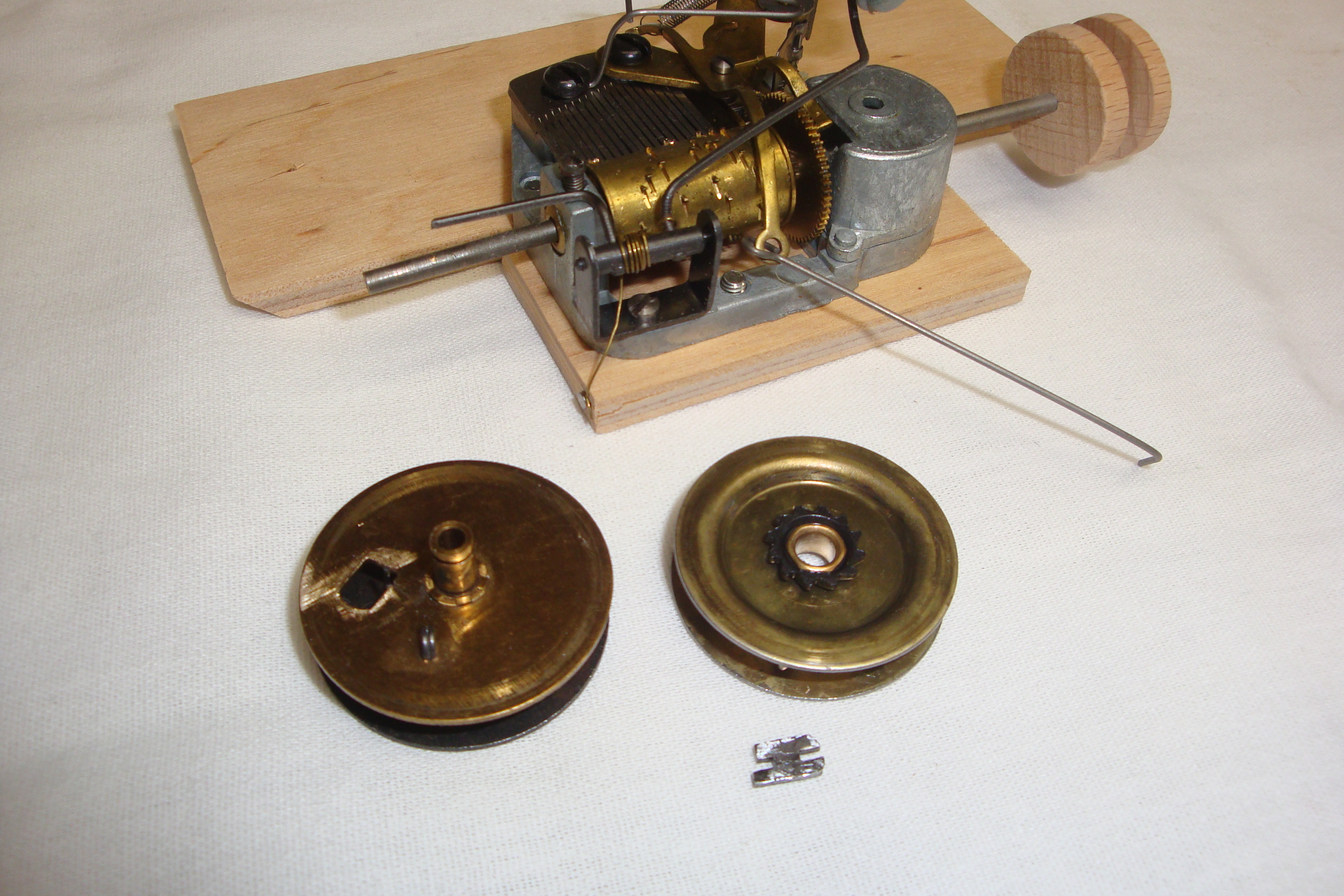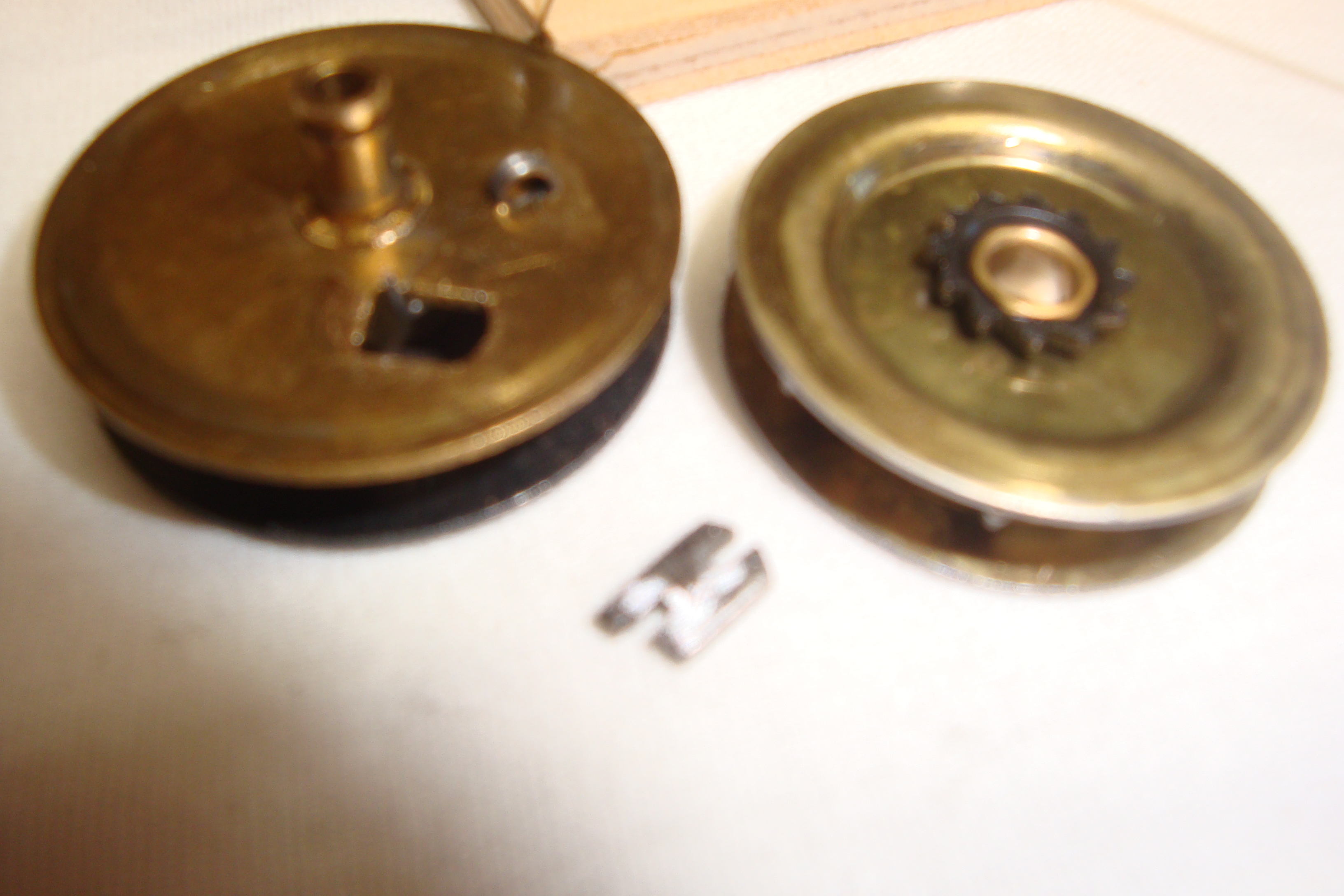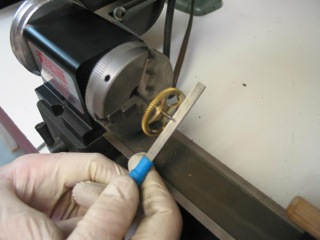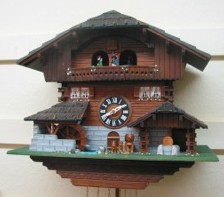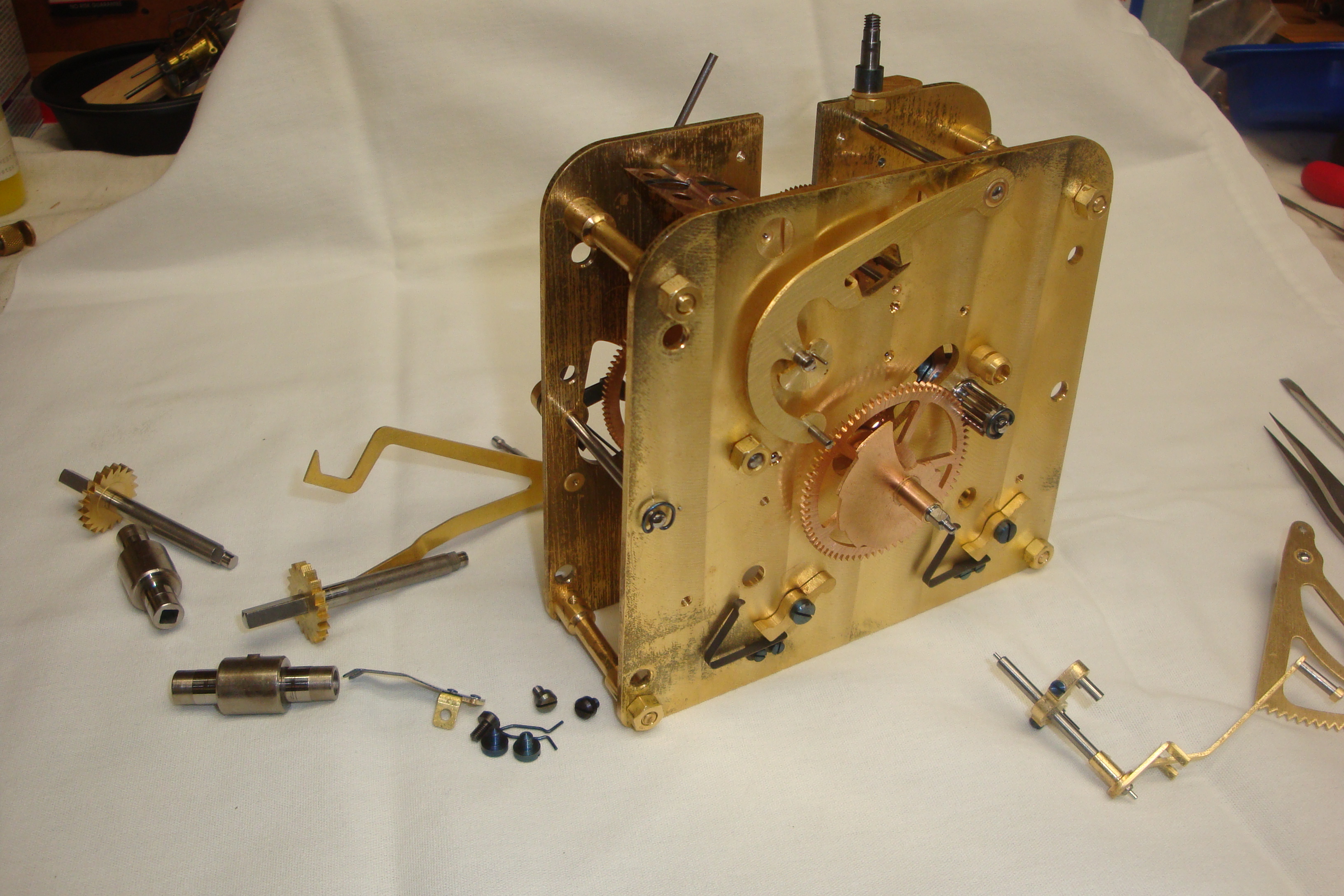
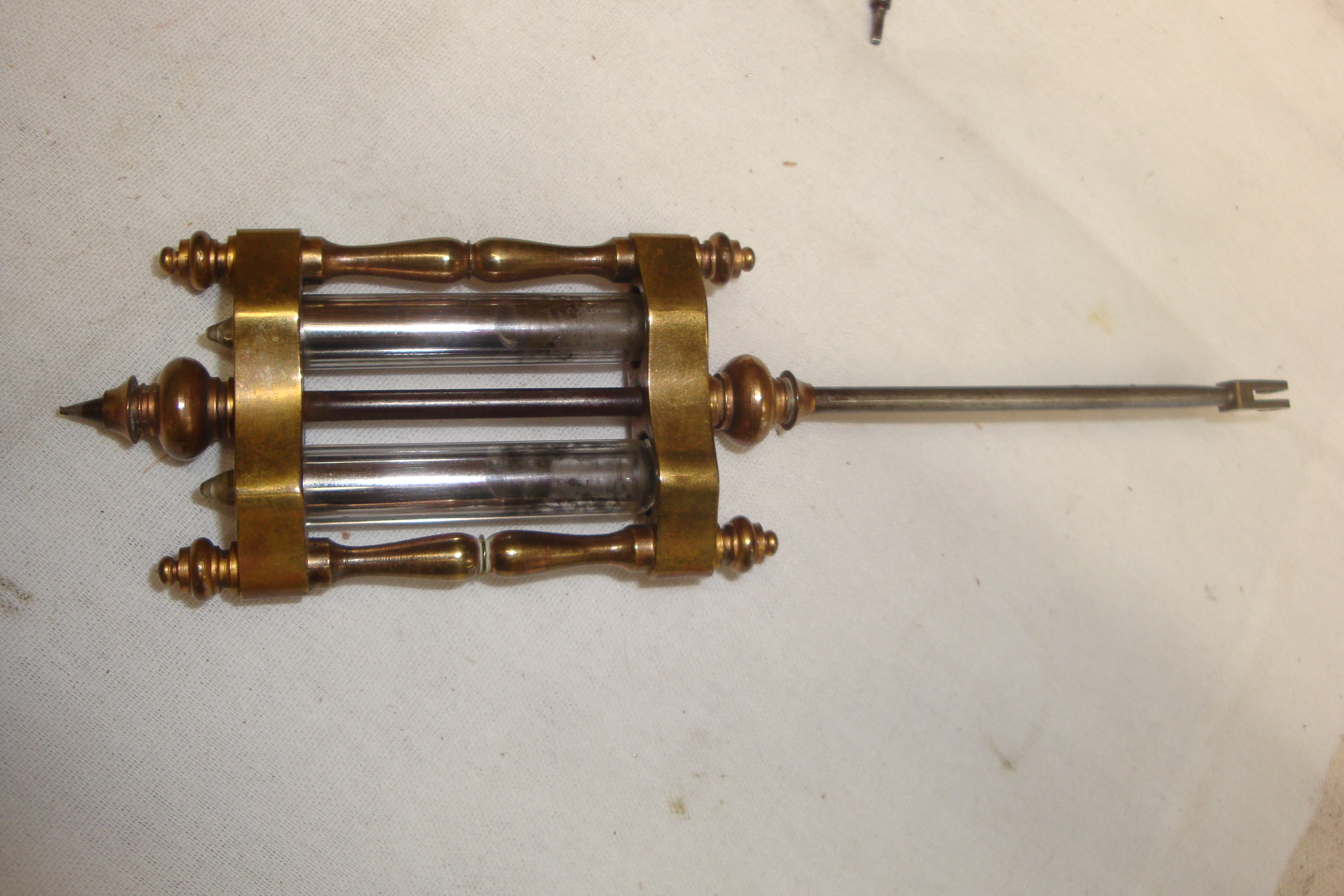
French Crystal Regulator with a Genuine Mercury Pendulum.
This is a movement from a French Crystal Regulator that I started on today. It’s ready to go through the cleaning process. What’s particularly interesting is that this clock has a genuine mercury pendulum. The two silvery cylinders you see on the pendulum are actually glass vials, partially filled with mercury. Its purpose is to maintain accurate timekeeping despite temperature variations.
Metal expands when the temperature rises, so the pendulum will actually lengthen, causing the clock to run slower. However, the mercury in the vial rises upward with the elevated temperature. This causes the “functional pendulum length” to remain relatively stable, and the clock maintains more accurate time. Cooler weather has the opposite effect and will shorten the pendulum. Normally this would cause the clock to gain time, but the mercury level lowers, keeping “functional pendulum length” the same. Think of it as the “center of gravity” remaining constant.
Other types of temperature compensating pendulums were created and put into operation because many years ago it was impossible to maintain a steady temperature without central heating and cooling systems. Nowadays, because we don’t experience the same degree of temperature changes in our homes, the “temperature compensating pendulums” are relatively non-existent. Non-functional replicas have taken their place. The mercury pendulum went “fake” decades ago. Most of what I see are replicas that contain a silver colored insert that looks like mercury. Those pendulum have no temperature compensating action at all.
I’m hoping to soon post pictures of some of the other types of temperature compensating pendulums. Stay tuned!!

